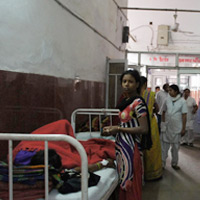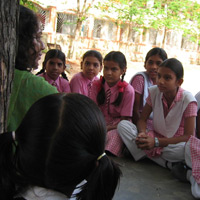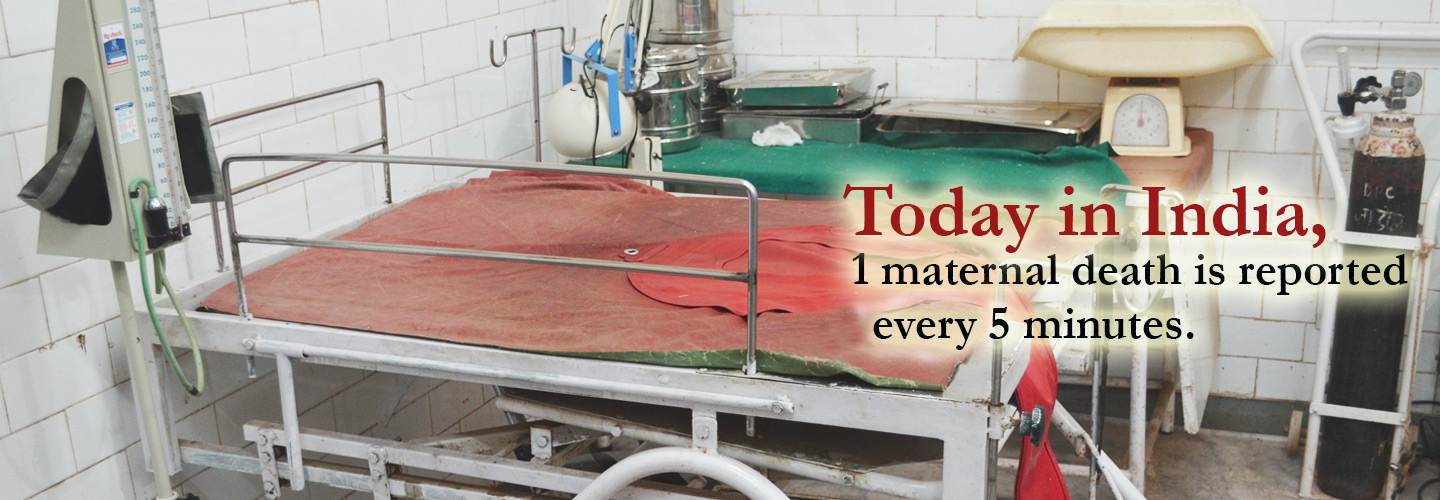Barriers to Maternal & Infant Health and Wellbeing

Child Bride
While teen pregnancies are becoming abundant, so too are the associated risks to infants, such as a low birth weight which is often associated with higher rates of infant mortality…
more….
Since women bear the domestic responsibilities of the household, the futures of most young girls in rural India are predetermined during their childhood. As early as primary school, most young girls are kept home from school in order to assist in chores or raising younger siblings. Additionally, in order to safeguard her future, parents arrange their daughter’s marriage within her formative years. Although she is not normally sent to live with her husband and in-laws until her early teens, young girls are exposed to sexual intercourse at a very young age. While teen pregnancies are becoming abundant, so too are the associated risks to infants, such as a low birth weight which is often associated with higher rates of infant mortality. Search blogs related to this issue..

Caste System
This societal discrimination instigated by the historical caste system, has resulted in a demographic of women struggling to advocate for themselves and their children…
more….
In historical times, the caste system emerged as a system of social stratification. In modern day, the caste system persists as a vicious cycle of discrimination and bondage. Those living in rural India exist below the lowest rung of the caste system and are classified by the Indian government as Scheduled Tribe, Scheduled Caste or the Other Backward Class. As a result of their caste and consequential social status, women and infants from rural India are treated with disdain within public medical care facilities.This societal discrimination instigated by the historical caste system, has resulted in a demographic of women struggling to advocate for themselves and their children.
Search blogs related to this issue..

Poverty
While women struggle to support the household and tend to their babies, their infants often face malnutrition, lack of access to clean water causing dehydration and diarrhea…
more….
On average a woman gives birth to a minimum of 5-7 children, working through each pregnancy and often continuing to work as early as 1 or 2 days post delivery. Supporting their nuclear family as well as the larger community, women are responsible for the household, tending to children and elders, animal husbandry and traditional farming. Additionally, a woman fills the absence of her spouse and/or children who are gone in search of seasonal work, by working laborious jobs such as road building and construction in order to ensure a daily wage. While women struggle to support the household and tend to their babies, their infants often face malnutrition, lack of access to clean water causing dehydration and diarrhea, inadequate immunizations due to poor medical infrastructure, often culminating in infant mortality.
Search blogs related to this issue..

Medical Care
The lack of proper care and attention during pregnancy and childbirth has led to alarming rates of maternal mortality caused namely by severe bleeding, infections, obstructed labour…
more….
While 70% of the population of India lives in rural areas, many of these communities are isolated from public and private medical facilities. Often the closest government medical care unit lacks both trained birth attendants and the medical facilities necessary to aid in complicated pregnancies or childbirth cases. The lack of proper care and attention during pregnancy and childbirth has led to alarming rates of maternal mortality caused namely by severe bleeding, infections, obstructed labour, and blood clots.
Search blogs related to this issue..

Education
Within the last 40 years, rural communities in India have gained access to formalized public education, however women and young girls are often the last to be educated…
more….
Within the last 40 years, rural communities in India have gained access to formalized public education, however women and young girls are often the last to be educated. Since the education of girls has not been prioritized, generations of women have lacked the opportunity to understand health trends, raise their concerns and seek necessary interventions. Furthemore, their illiteracy has stunted their ability to pro-actively access medical knowledge and resources regarding anything from prepubescent’s to woman’s reproductive health, and has generated an overall passive approach to pregnancy and childbirth.

Transportation
Unfortunately, the majority of maternal and infant deaths occur while women are on route to a medical care facility for the birth of their child…
more….
A woman with child often travels 20kms to 500kms, even crossing state borders in search of adequate medical facilities during her pregnancy and at the time of childbirth. Unfortunately, the majority of maternal and infant deaths occur while women are on route to a medical care facility for the birth of their child. The topographies of rural communities are often mountainous and intersected by bodies of water or areas that are heavily forested, resulting in terrain that is difficult to navigate by foot, two-wheeler or car. Needless to say, public transportation is often inaccessible in these areas.


